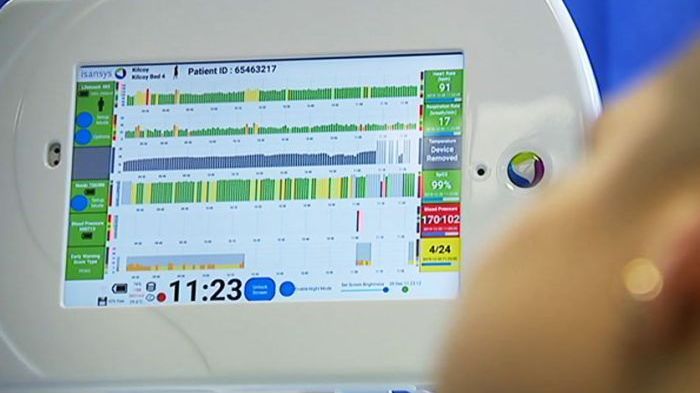
Blog post -
The Future of NHS Care is Real-Time Clinical Data - And It's Already Here
By Georgina Horton, Head of Marketing and Communications, Isansys Lifecare
As the UK embarks on modernising the NHS to meet future challenges, the push for digital health technology couldn't be more timely. Remote patient monitoring, predictive analytics, and early intervention are not just the future of healthcare - they are tools we already have, ready for widespread implementation today.
At Isansys Lifecare, we have partnered with healthcare providers around the world to harness the power of real-time patient monitoring and data integration - tools that can significantly alleviate the pressures facing hospitals. Yet, despite these advancements, the NHS continues to face unprecedented challenges: rising demand, a growing funding gap, and more than a decade of underinvestment in healthcare technology.
The Darzi Report highlights that the NHS has endured years of underfunding, especially in digital health. While money has been allocated, it has often been misdirected, leaving healthcare staff without the tools they need to work effectively. As a result, clinicians often work reactively rather than proactively. Currently, 1 in 7 hospital beds is occupied by patients who could be managed in the community if appropriate resources were available. This situation places unnecessary pressure on hospitals, extends waiting times, and leads to poorer patient outcomes.
The Labour Party’s recent healthcare review rightly emphasises the critical role technology must play in transforming care. As the NHS moves towards a prevention-first, community-based model, solutions like our Patient Status Engine (PSE) are vital. The PSE continuously monitors patient data in real time, identifying potential health risks before they escalate, allowing healthcare professionals to intervene early, reduce hospital admissions, and improve patient outcomes.
This technology is not hypothetical - it’s already making a difference. The Patient Status Engine has been implemented in healthcare systems globally, delivering faster diagnoses, shorter hospital stays, and fewer complications. In a recent pioneering study, continuous monitoring with the PSE required an average of just 6 minutes per patient per day, compared to 14 minutes per patient per day using manual NEWS assessments. For isolated patients, the time savings were even more dramatic, with PSE monitoring taking 6.6 minutes compared to 22 minutes manually. These results demonstrate the system’s ability to significantly reduce the time spent on monitoring, freeing clinicians to focus on more complex patient care.
Although the NHS faces significant financial pressure, digital health technology offers not only improved care but substantial cost savings. Scaling solutions like the PSE could save millions annually by reducing hospital admissions and shortening patient stays. By catching potential problems early, these technologies help patients stay healthier longer, while cutting long-term healthcare costs.
As our society ages and people develop illnesses earlier, the pressure on the NHS will only increase. Compounding this issue is the fear surrounding winter fuel payment cuts, which could lead to 4,000 additional deaths due to cold-related illnesses. In this context, real-time, community-based health monitoring solutions are essential. By equipping NHS staff with the tools they need to provide proactive, efficient care, we can help prevent the winter crises that strain the NHS every year and address broader challenges. From reducing emergency admissions and alleviating hospital bottlenecks to improving overall patient outcomes and ensuring better resource utilisation, digital health solutions like the PSE have the potential to transform healthcare delivery across the board.
The digital health revolution isn’t something on the horizon - it’s already underway. At Isansys, we have long advocated for real-time patient monitoring as a transformative force in healthcare. By empowering clinicians with actionable data and giving patients greater control over their care, we can ensure that healthcare resources are used where they are needed most, whether in hospitals or in communities.
We call on policymakers to invest in proven digital health solutionsnow. By embracing digital health, the NHS will not only meet today’s challenges but will become more resilient and adaptable for the future.
The Patient Status Engine stands ready to play a pivotal role in this transformation, delivering the right care at the right time, wherever the patient may be.